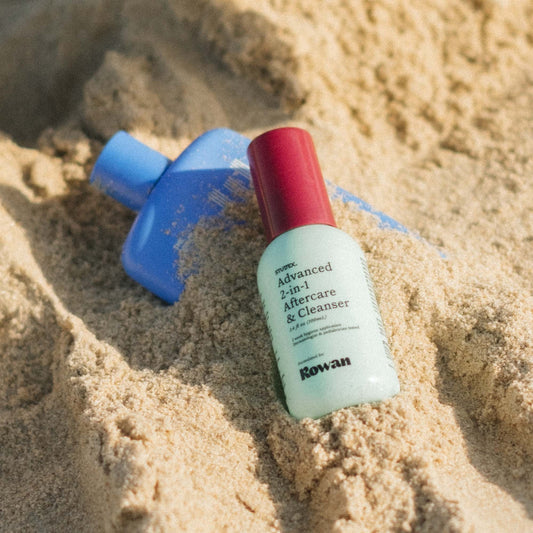Hypertrophic Scars & Ear Piercing Bumps
Why Do I Have a Bump on My Ear?

Bumps happen! If you’ve ever developed a small bump on your piercing and wondered what it could be, you’ve come to the right spot.
Hypertrophic scars (commonly referred to as friction bumps) can happen to anyone after receiving an ear piercing - regardless of whether you’re taking appropriate aftercare measures. Fortunately, they don’t have to be permanent and will go away with proper care and treatment.
Understanding Hypertrophic Scars
Although scary sounding, hypertrophic scars are forms of irritation which often develop as a result of friction around or in a piercing. They are small, raised, flesh-colored bumps that develop immediately around the site of the entry and/or exit points of a new piercing. Sometimes, clear fluid drains from the site.
Friction bumps are often confused with keloids, but they are not the same. Keloids are an overgrowth of scar tissue that extend beyond the boundaries of the initial “injury” (Mayo Clinic, 2023). They often have a shiny appearance, are firm, and are raised from the surrounding tissue. Keloids can develop immediately following the piercing or even years after a piercing and can be itchy. Also - whether or not you’ll develop keloids can be genetic!
Causes of Hypertrophic Scars from Ear Piercing
Hypertrophic scarring is a result of too much collagen production at the wound site (Cleveland Clinic, 2023). They are signs that irritation is happening in the area; usually, this is due to friction (an earring back rubbing against the skin) or trauma (catching your earring on a pillowcase or clothing, or a small child grabbing and pulling your earring).
Treatment Options for Hypertrophic Scars
Most hypertrophic scars will go away on their own with no treatment. The first course of action is to continue cleaning your new piercing with our Advanced Aftercare Solution as instructed and avoid touching or sleeping on it.
Next, call your nurse! You may be able to change your earring type depending on when you got pierced, your individual ear anatomy, and where the friction bump is developing.
When to Seek Professional Help
Signs of infection include redness, excessive swelling, yellow-green discharge, or fever. If you suspect that your piercing is infected, always seek medical care from your primary care provider.
If you ever have questions about your piercing and aren’t sure what next steps to take, come see our nurses in a studio near you!
Prevention Strategies for Hypertrophic Scars
When it comes to preventing hypertrophic scars after an ear piercing, it’s important to recognize that you can do all the right things in caring for your earring and choosing a safe establishment to get pierced and still develop a hypertrophic scar.
Fortunately, there are a few things you can do to give yourself and your piercing the highest chance of success:


